The size, distribution, and composition of mantle heterogeneities
The source regions of mid-ocean ridge basalts (MORB) are heterogeneous, consisting of chemically and lithologically distinct domains of variable size. Partial melting of such heterogeneous mantle sources gives rise to diverse isotopic compositions of MORB and abyssal peridotites (e.g. 143Nd/144Nd). The offset of Nd isotope ratios in MORB and abyssal peridotites is a natural consequence of melt pooling. We show that observed variations of isotope ratios in MORB can be reproduced if these heterogeneities are 5-8 km in size and have higher abundance of incompatible trace elements than the depleted mantle.

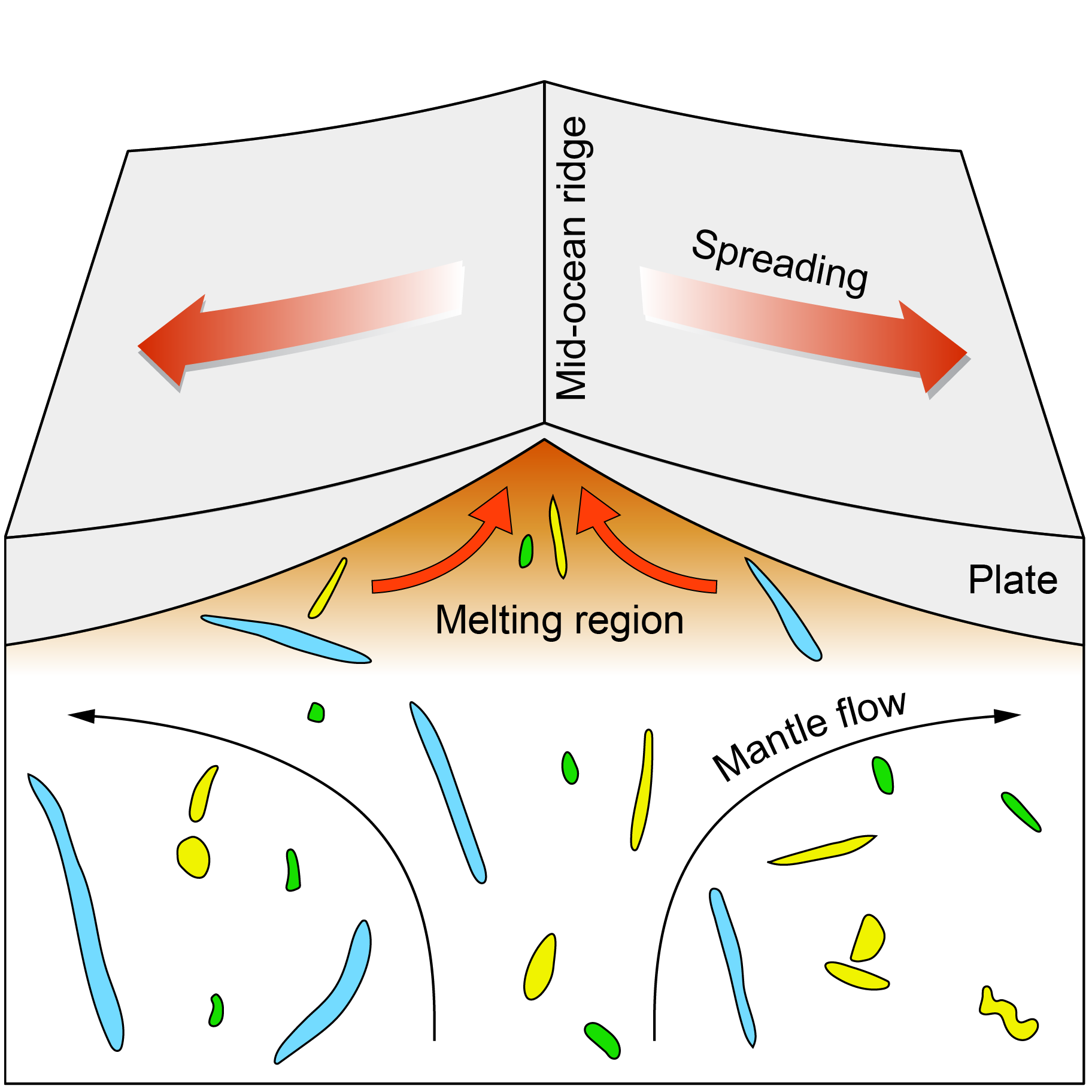
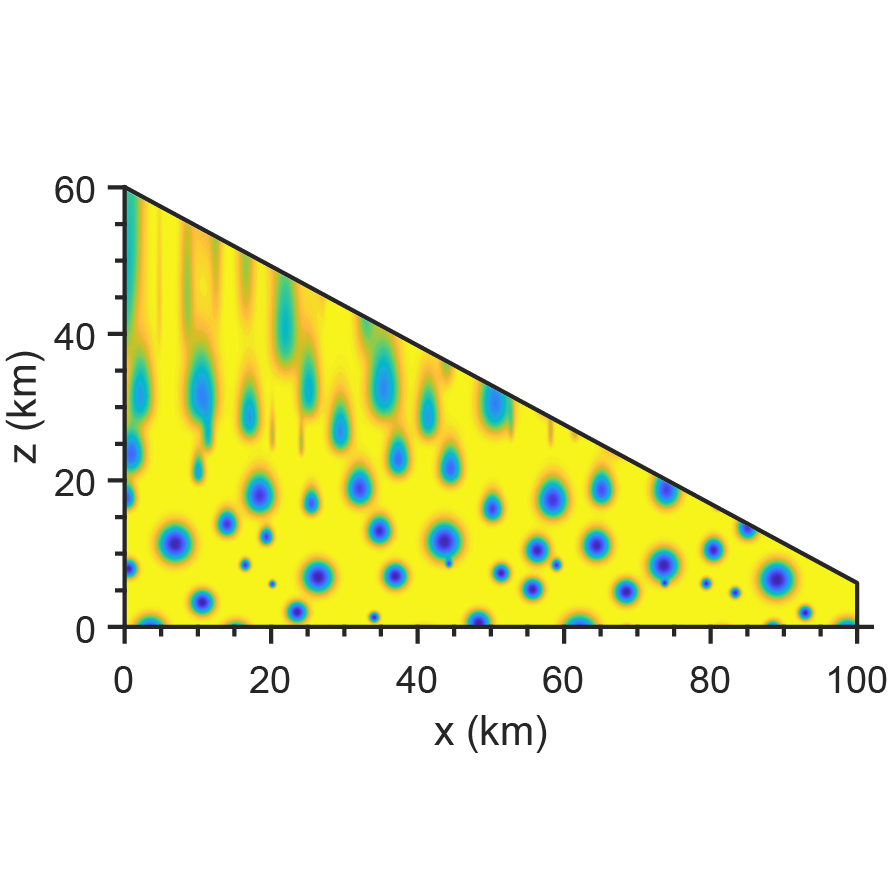
Geochemical inversion using nonlinear method
Geological observation is always an integrated product of coupled physical and chemical processes which happened at depth. To get insights from the obervation, we will need inversion method that can utiilize a large number of data and handle nonlinear models for related geological processes. Markov chain Monte Carlo (MCMC) algorithm is such a powerful statistical method in solving inverse problems. In an application to rare earth element abundances in clinopyroxene in abyssal peridotites from a number of mid-ocean ridges, I investigated the degree of melting and the rate of chemical exchange relative to the rate of decompression melting. The inversion results implies an incresing melting rate upward, which supports predictions of independent thermodynamic analysis.
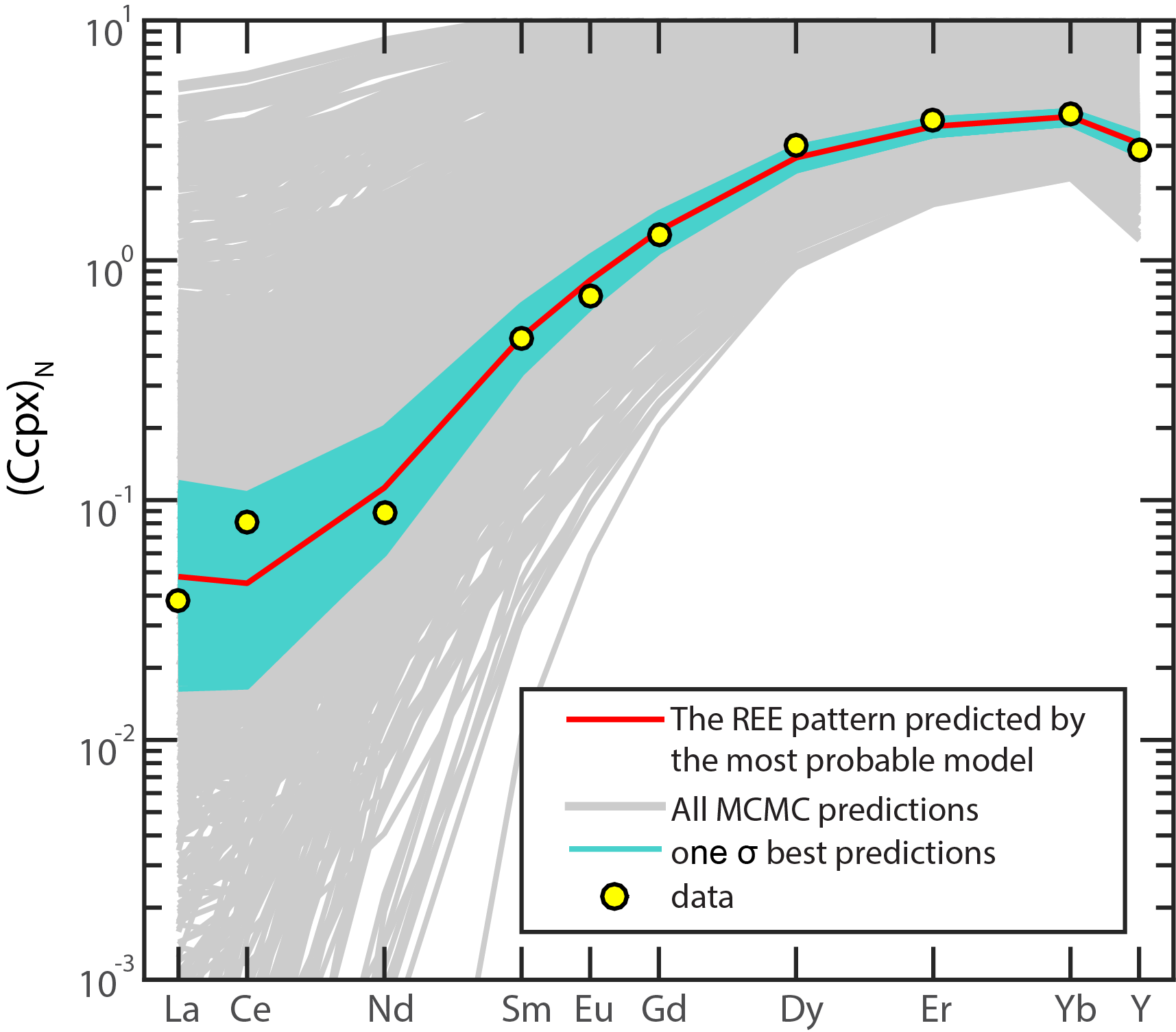
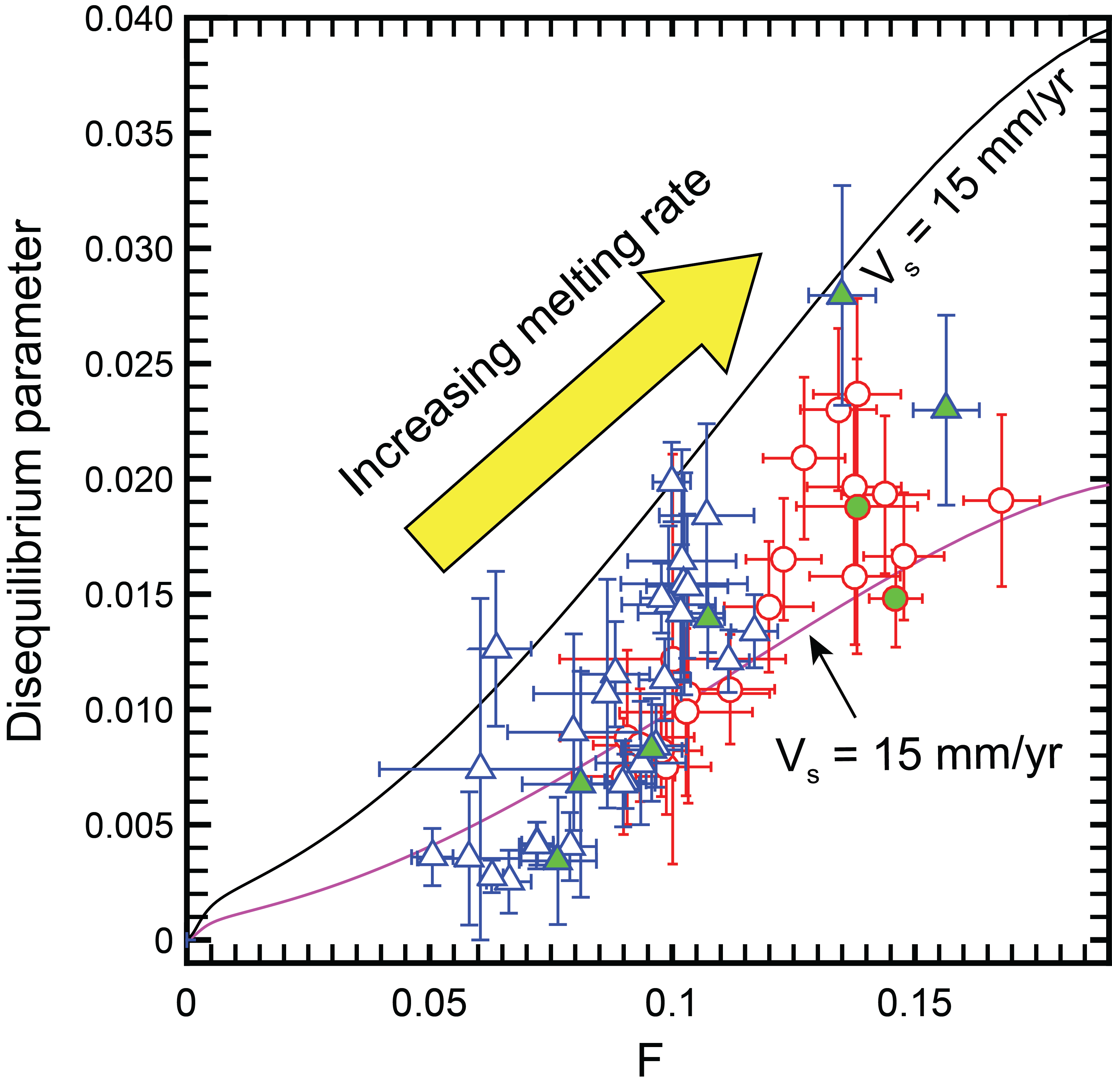
Double-porosity ridge model
Several lines of evidence suggest that beneath mid-ocean ridges there is an interconnected channel network. I treat the high-porosity dunite channels and the low-porosity harzburgite or lherzolite matrix as two overlapping continua. The key result is that deep channel networks can reconcile geochemical data and geophysical observation of melt distribution.
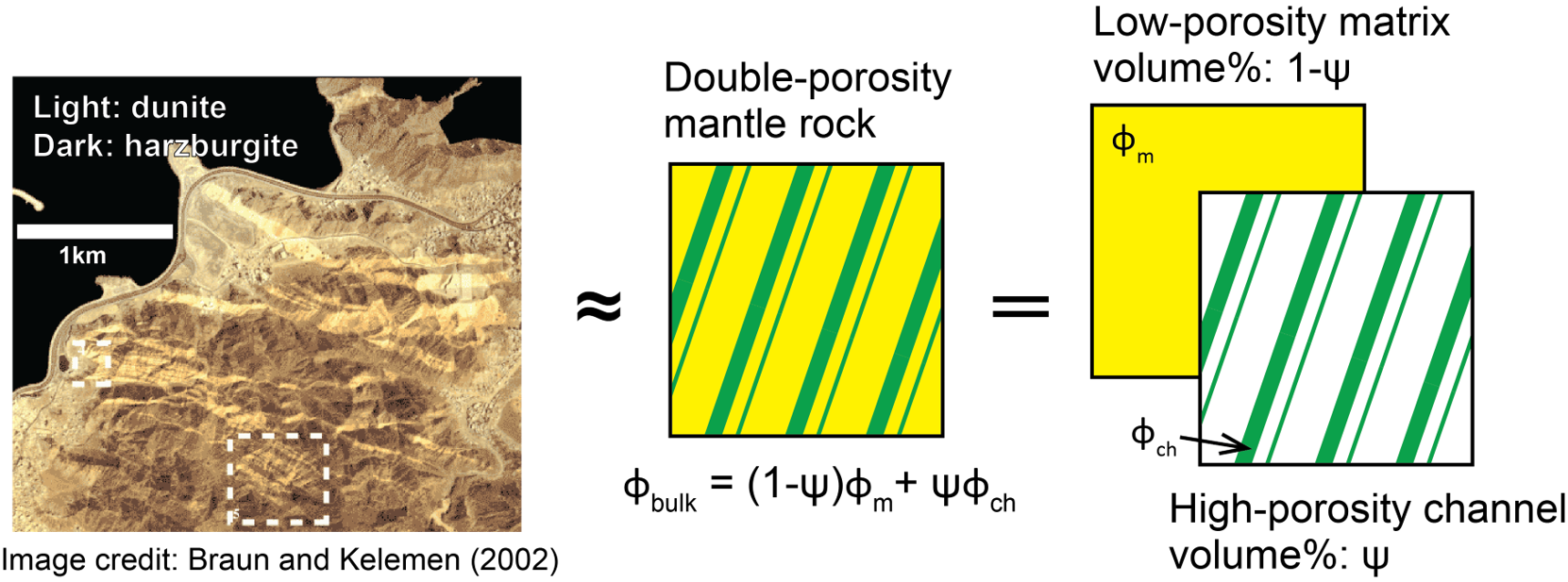
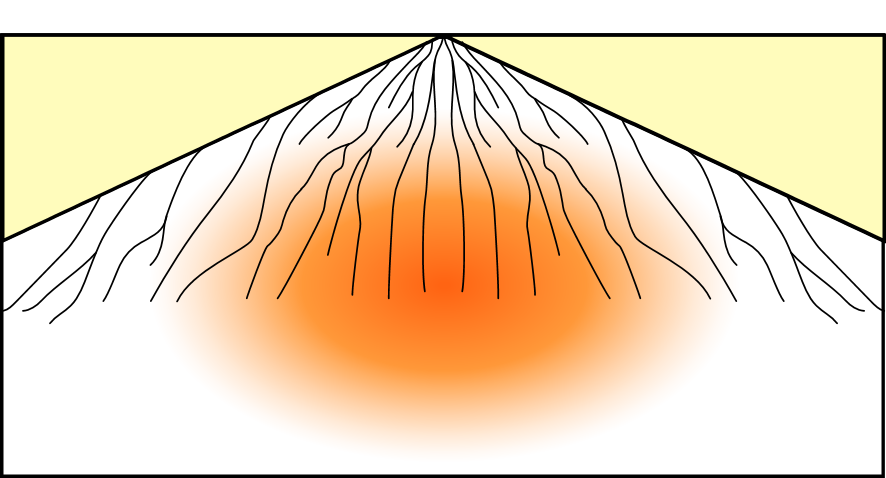
Trans-crustal magmatic system
Episodic intrusion of mafic magma into crystal‐rich magmatic mushes induces ephemeral fast melt expulsion and triggers large silicic eruption..
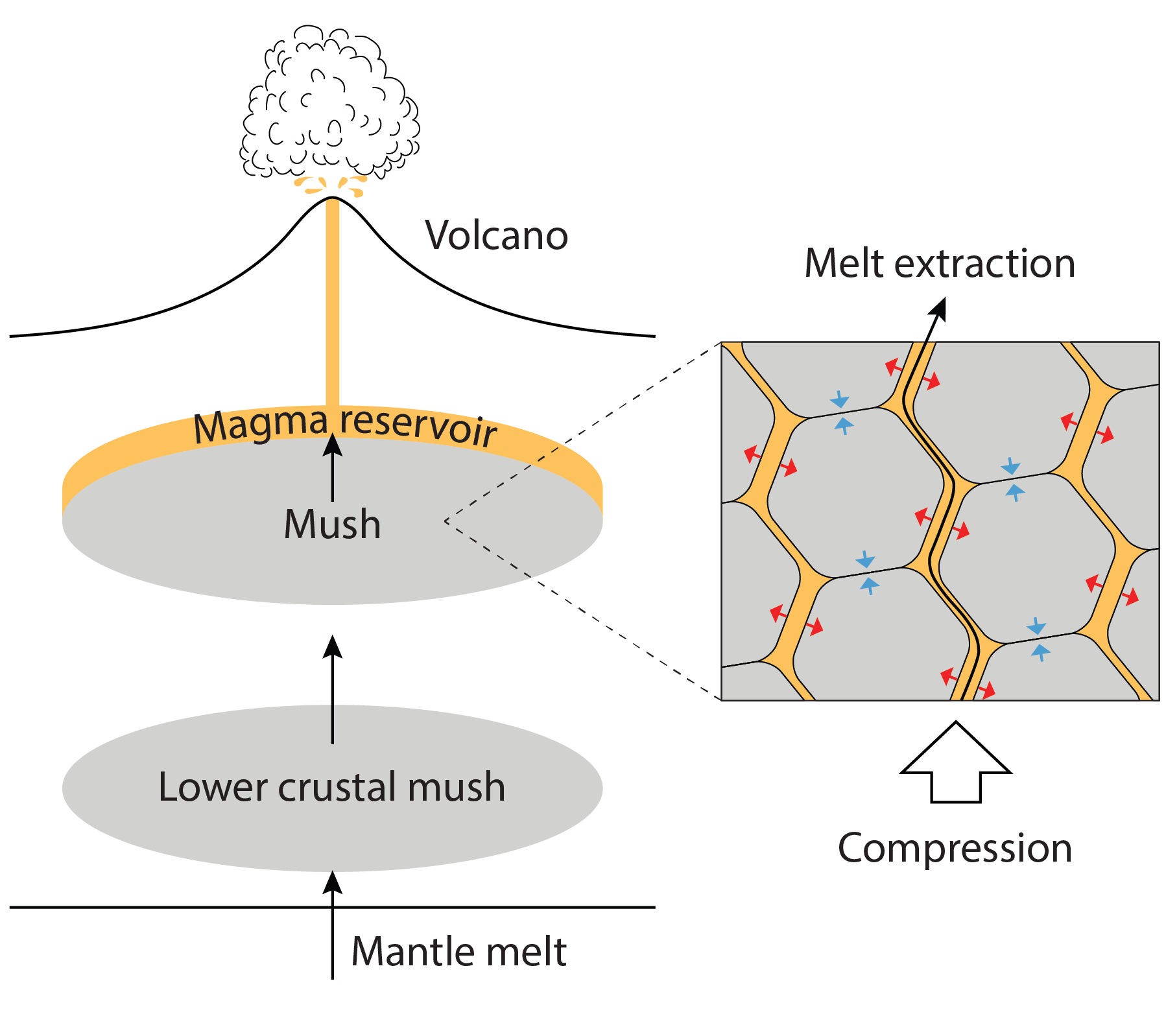
The "Moon Cake" project
The moon once formed a magma ocean after accretion. Cooling and crystallization of the lunar magma ocean probably formed the initial layer structure of the lunar mantle. However, this cumulates layering is top-heavy unstable. The overturn could have mixed materials from different initial layers with distinct geochemical signature ("Moon Cake"). Deep mixed material in the lunar mantle gives rise to picrite glass. By studying the trace element pattern of all picrite glass samples available, we are able to disentangle the proportion and composition of materials from different layers. Preliminary results suggest late cumulates derived melt (25% - 75%) and the primitive melt (0 - 45%) are the two most significant endmembers. The mixing of these two endmembers from initially non-contact layers is consistent with the overturn.
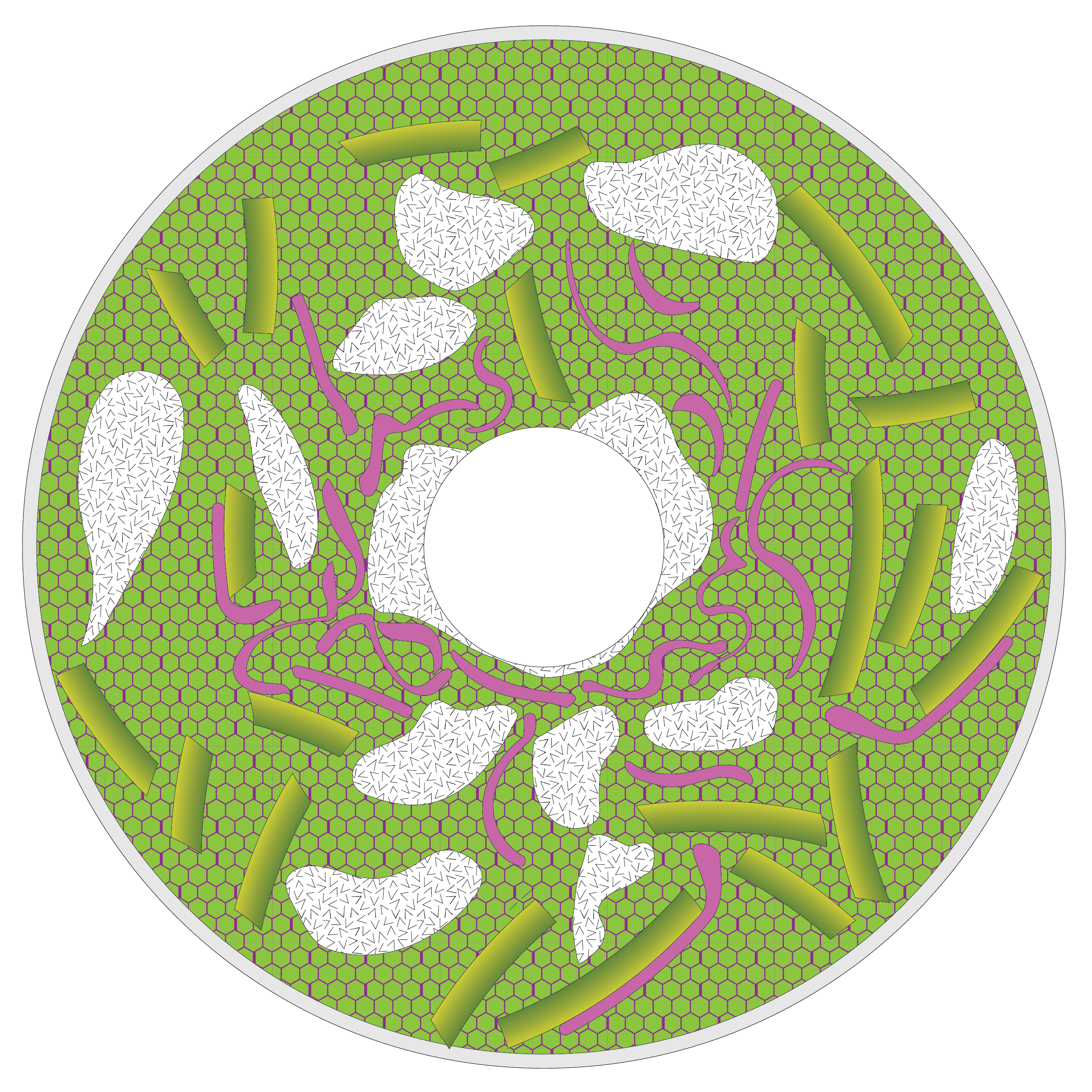

More to come...